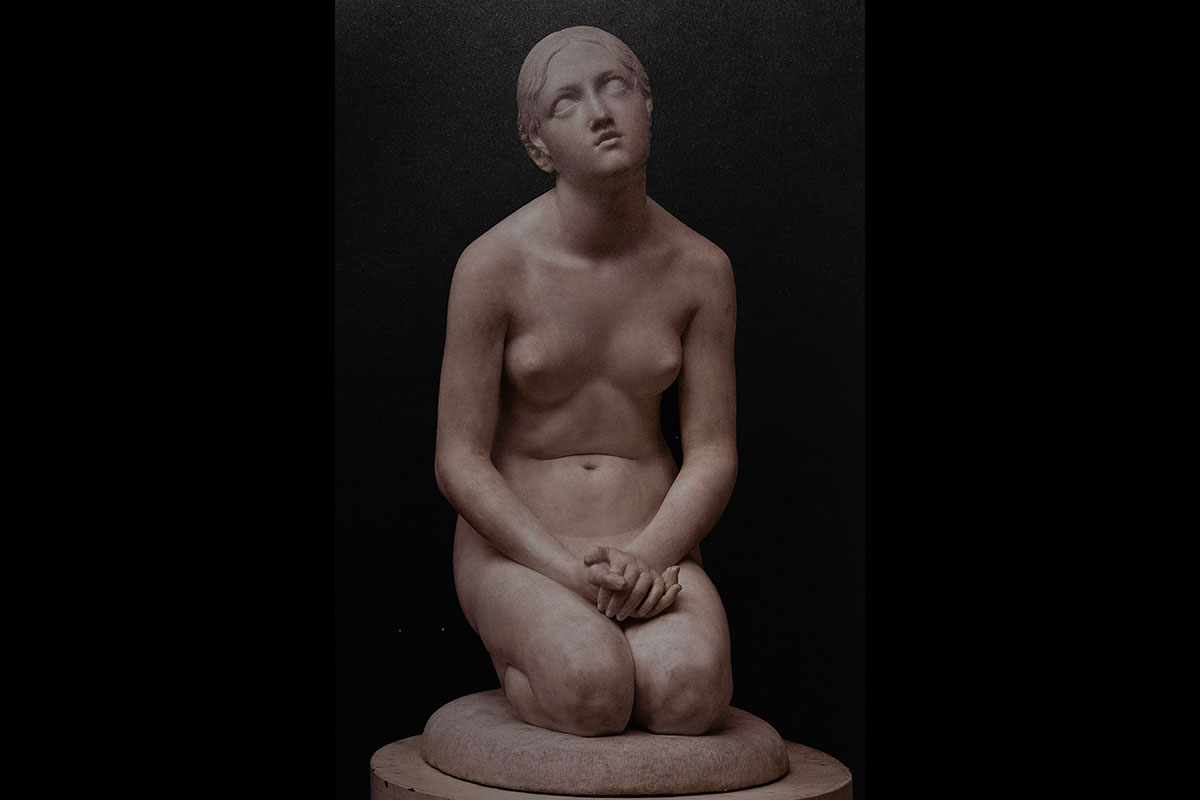LORENZO BARTOLINI (1777-1850)

Lorenzo Bartolini was born in Savignano near Prato on January 7 1777, from a humble family. After having trained at the Accademia of Belle Arti of Florence in 1799 he stayed in Paris, where he received a very important commissions. Thanks to the interest of Elisa Baciocchi, Napoleon’s sister, in 1807 he was appointed professor of sculpture at the Accademia of Belle Arti in Carrara and became the official sculptor of the Bonaparte family, for which he sculptured numerous portraits. After the downfall of Napoleon he returns in Florence and has his first studio in via della Scala. It’s noted by the international clients present in the city as a portraitist and author of works, proposing the overcoming of static neoclassical forcing expressions in the name of that “naturalness” studied by the real and mediated by the rediscovery of the four hundred Florentine. In 1829 Bartolini bought and restored an ancient ecclesiastical structure in Borgo San Frediano; here it’ll be surrounded by stonemasons, rough-knives, models and helpers including its favorite pupil Pasquale Romanelli. The latter, after the death of the master, will take over the Studio in San Frediano, now home to the Romanelli’s Gallery. In 1830 he was commissioned the monument of the Russian Prince Nicolai Demidoff: for to many contrasts between the artist and the client and repeated delays in the completion of the work, this is remained incomplete in his death. It was the task of his pupil and continuator Pasquale Romanelli to conclude the work now placed in the homonymous Florentine square on Lungarno. From 1939 he became teacher at the Accademia of Belle Arti in Florence and fought to spread a style of sculpture more related to the naturalistic vitality rather than academic ideals. The peak of his fortune was reached with La fiducia in Dio (1835) for the Marchesa Rosina Trivulzio Poldi Pezzoli, commissioned by her following her husband’s disappearance. The work was immediately celebrated as one of the masterpieces of modern sculpture for the extraordinary ability of the artist to make in marble the tenderness of the adolescent forms of the young woman, gathered in confidant religious meditation. Bartolini died on 20 January 1850 in Florence and was buried in the chapel of San Luca in the Basilica of SS. Annunziata, in the same crypt where the remains of Pontormo and Benvenuto Cellini rest.

